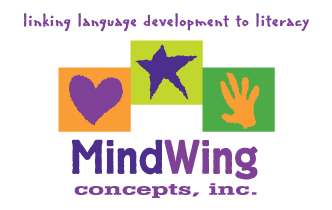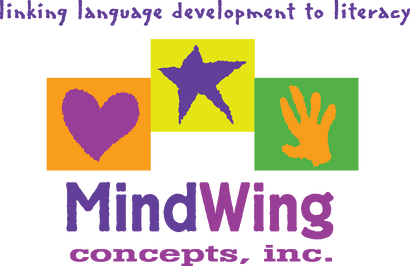Secure Checkout. FREE SHIPPING for Continental U.S. Orders over $60.
Menu
-
- Home
-
About Us
-
The Approach
-
Linking Language & Literacy
-
MindWing Learning
-
Learning Resources
-
SHOP
-
Blog
-
- About MindWing
- Our People
- Contact Us
- Your Account
- Login
-
United States (USD $)

Secure Checkout. FREE SHIPPING for Continental U.S. Orders over $60.
Simple Comics for More Advanced Language
January 20, 2012
At the elementary school level, we all can attest to seeing students who, narratively, get stuck at what we might call the “andthenandthenandthen” stage. The official name for this stage is the Action Sequence, and it is comprised of Characters, Settings, and a series of Actions with little variation in conjunction use. These students benefit from structures and contexts to move them into using to more complex story elements and cohesive ties such as when, because, and so. Mindwing’s narrative maps, particularly the Reactive Sequence and Abbreviated Episode Maps can provide that structure: (*Maps can be found in the Story Grammar Marker® Teachers’ Manual and the Talk to Write, Write to Learn™ Teachers’ Manual )...
Story Mapping and Seasonal Cheer
December 14, 2011 2 Comments
The holiday season creates a lot of excitement for our students, no matter what holiday they celebrate! This mood can lead to a lot of language and, of course, the opportunity to develop narrative using Story Grammar Marker®. In this post, I’ll be mentioning a couple of resources you can use to acknowledge the season (in varying degrees of sectarianism) while reinforcing use of narrative elements and SGM® icons.
The first is a brief Pixar-like animated short I stumbled across in my blog-surfing routines; I am so glad I found it! As I described in a previous post, wordless videos can be an engaging way to have students “fill in” the language that is not used in the video...

A Wonderful Wordless Video Series for Narrative Development
November 10, 2011 1 Comment
SLPs and teachers working in language intervention often turn to wordless picture books as a fun context to develop storytelling skills. Series such as Mercer Mayer’s “A Boy, a Dog, and a Frog...” tell stories through pictures and ask readers to tease out the story, inferring the important details and relying on characters’ facial expressions to glean important clues. Similarly popular are David Wiesner’s Tuesday and Sector 7, which depict narrative through fantastical illustrations, and Alexandra Day’s “Carl” series, in which a dog goes to great, un-dog-like lengths to care for his charge, a little girl named Madeleine. I have long been a fan of using such visual narrative materials with students, not only to develop storytelling skills...

Using QR Codes for Spooky Narrative Development
October 24, 2011

Over on my blog SpeechTechie this month, I am discussing in a series of posts the incredibly useful technique of using QR codes in language interventions. QR codes, which look like this (at left) were born in the world of marketing (you may have seen them on ads about town) but are making their way into educational settings as an attention-grabbing tool. QR codes can be created very easily and printed, then scanned with free apps available for your smartphone or iPad. When scanned, the app will show text that you entered or a link to a website...
Fantastic Narrative Intervention with Toontastic
September 27, 2011
 Recently in the Mindwing Blog I featured the Story Patch iPad app, which allows students to create stories according to provided structures or from scratch, resulting in a text and picture-based booklet.
Recently in the Mindwing Blog I featured the Story Patch iPad app, which allows students to create stories according to provided structures or from scratch, resulting in a text and picture-based booklet.
I wanted to follow up that post with a different digital storytelling app that provides an easy means to create and publish dynamic animated stories with spoken audio and music! The app I speak of is Toontastic (an absolute BARGAIN at $1.99), whose creators at Launchpad toys have sought to bridge the gap created when students who primarily express themselves through play are suddenly expected to write stories (i.e. that gap we call “First Grade”). Toontastic uses the iPad’s multitouch interface...

Sharing our own Stories & Social Problem Solving using Story Grammar Marker®
September 01, 2011
Over the summer I had the kind of “Kickoff” that we all hope to avoid in the course of our ho-hum days. It was a 95-degree school day and I was leaving one setting to go to my private practice and run a social skill group. As I opened my passenger side door to put my bag in the car, an oppressive blast of heat enveloped me. I decided stupidly that it would be a good idea to lean over and start the car so the A/C could have, you know, a millisecond to cool down the car as I walked around toward the driver side. Of course when I got there the door had locked automatically, as it had on the other side. Ugh...
